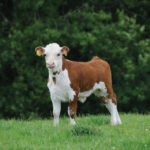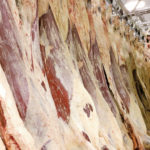
There may be slim pickins in the pasture
Water-stressed forages have more fibre and less protein, and that can reduce feed intake and body conditioning

New technology brings new risks to the farm, say experts
Advances — from needleless injectors to auto steer — make farming easier, but also have safety implications

The fall run is tough on calves but we can do better
The health problems seen in the feedlot don’t come out of the blue and careful handling should start at the home ranch

Three approaches to managing first- and second-calvers
Their methods differ, but these three ranchers are all focused on maintaining body conditioning

First-calf heifers need some extra love
Keep a close eye on the conditions of these young females, that require more energy and nutrients than mature cows

Alberta cattle numbers are no longer falling — but herds are on the move
Some counties are seeing a major increase due to bigger herds, but crops are replacing cattle in other areas

Feed testing now can save you money
Testing is especially important this year as supplies are tight and quality down in many areas of the province
Two Lethbridge researchers chosen for mentorship program
Program will give Robert Gruninger and Stacy Singer a chance to know the beef industry better

Cattle producers urged to get premises identification number

There’s lots of money being left on the packing plant floor
Quality defects exceed $60 per head and reducing those losses will boost the bottom line for producers, says expert

